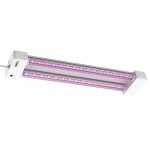LED Lighting Demystified: How Does an LED Light Work and Why It’s the Future of Lighting Technology?
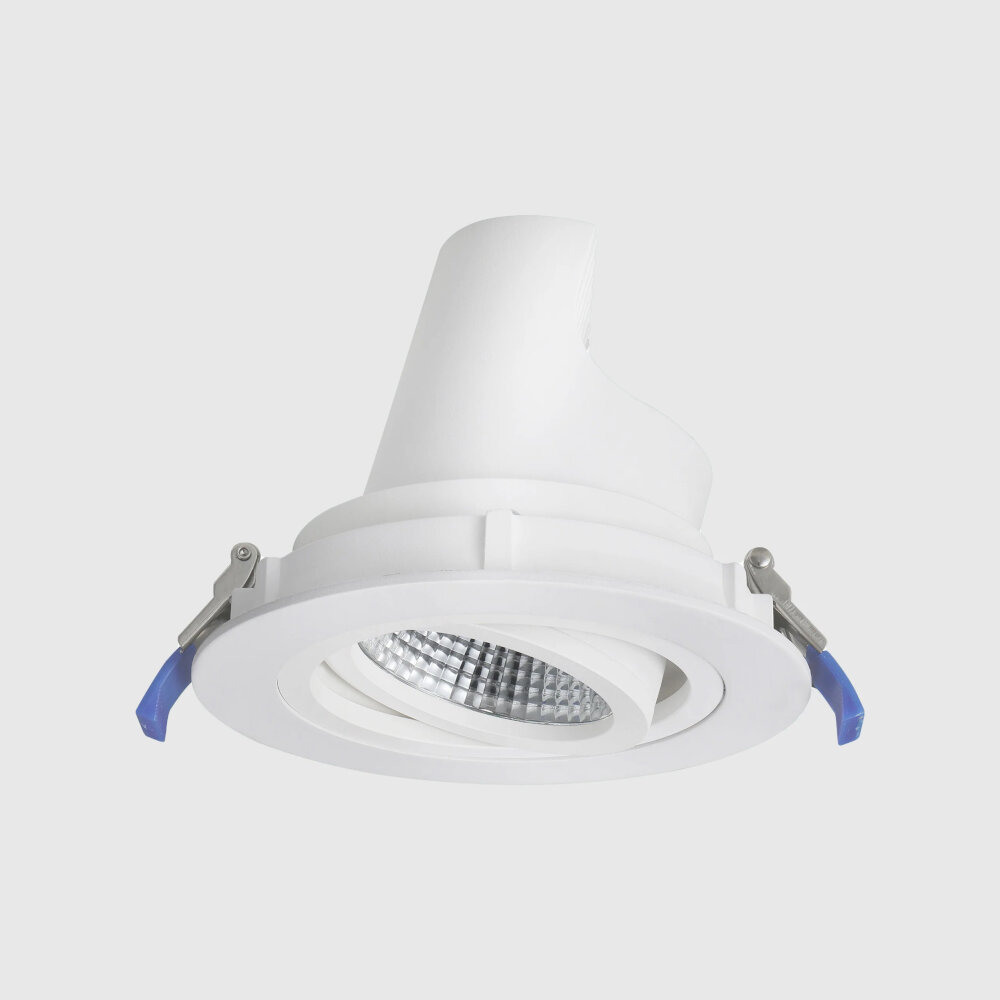
Light-emitting diodes, or LEDs, have transformed the world of lighting with their energy efficiency, long lifespan, and versatility. From traffic signals to household lighting and even large-scale commercial projects, LEDs have become the preferred choice for lighting designers and architects. But what is the science behind this remarkable technology, and why is it poised to become the future of lighting? In this article, we will delve into the workings of an LED light, explore its benefits and drawbacks, and examine the reasons why it has taken the lighting industry by storm. At its core, an LED is a semiconductor device that emits light when a current is passed through it. Unlike traditional incandescent bulbs, which produce light by heating a filament until it glows, LEDs use a completely different mechanism. When an electrical current is applied to the semiconductor material in an LED, it excites the electrons within the material, causing them to emit photons of light. This process is known as electroluminescence and is the key to the efficiency and longevity of LED lighting. With a typical lifespan of around 50,000 hours, LEDs outlast most traditional lighting options and use up to 80% less energy. But how exactly does this technology work, and what makes it so revolutionary? Join us as we uncover the science behind LED lighting and explore its many applications and benefits.
LED lighting, or Light Emitting Diode lighting, is a form of lighting technology that has become increasingly popular in recent years due to its energy efficiency and long-lasting nature. Unlike traditional incandescent bulbs, LEDs do not rely on a filament to produce light. Instead, they use a semiconductor material that emits light when an electric current is passed through it. This process, known as electroluminescence, allows LEDs to produce bright and vibrant light with minimal energy consumption. Additionally, LEDs can be designed in a variety of shapes and sizes, making them a versatile lighting option for a range of applications. As the world becomes more environmentally conscious and energy efficient, LED lighting is poised to become the preferred lighting technology for homes, businesses, and public spaces alike.
The history of LED lighting technology dates back to the early 1900s when the first LED was discovered by British scientist H. J. Round. However, it was not until the 1960s that the first practical LED was developed by Nick Holonyak Jr. Since then, LED technology has rapidly advanced, with the first blue LED being invented in the 1990s by Shuji Nakamura. This breakthrough paved the way for the development of white LEDs, which are now widely used in lighting applications. The efficiency and durability of LED lighting have made it the future of lighting technology, with LED lights being more energy-efficient, longer-lasting, and environmentally friendly than traditional incandescent bulbs.
How Does an LED Light Work?
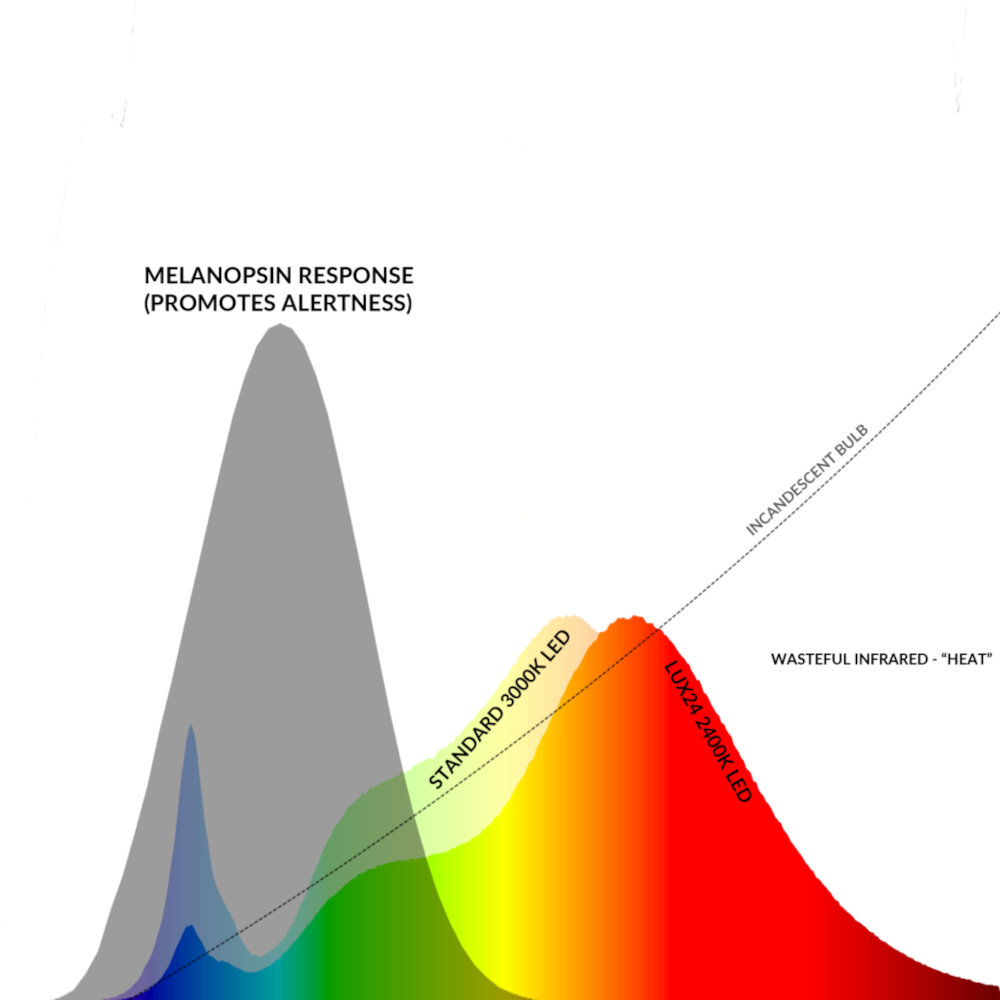
LED or light emitting diode is a semiconductor device that emits light when an electric current is passed through it. Unlike traditional lighting sources such as incandescent bulbs or fluorescent lamps, LEDs do not rely on heating a filament or gas to produce light. Instead, they use a process called electroluminescence, which involves the movement of electrons within the semiconductor material to produce light. When a voltage is applied to the LED, electrons move from the negatively charged region to the positively charged region, releasing energy in the form of photons or light. The color of the light emitted by an LED is determined by the type of semiconductor material used, and can range from red, green, blue, yellow, orange, and white. One of the biggest advantages of LED lighting is its energy efficiency. LEDs require less energy to produce the same amount of light as traditional lighting sources, making them an ideal choice for homes, businesses, and outdoor lighting applications. They also have a longer lifespan than traditional lighting sources, with some LEDs lasting up to 25,000 hours or more. Additionally, LEDs are more durable and resistant to shock and vibration, making them ideal for use in outdoor and industrial environments. With these benefits, it’s no wonder that LED lighting is rapidly becoming the preferred choice for consumers and businesses alike, and is poised to be the future of lighting technology.
Light emitting diodes, or LEDs, are a type of solid-state lighting technology that converts electricity directly into light. This is achieved by passing a current through a semiconductor material, typically made from a combination of elements such as gallium, arsenic, and phosphorus. When the current flows through the semiconductor, it excites the electrons within the material, releasing energy in the form of light. The specific wavelength and color of the light produced depends on the materials used to construct the LED, with different combinations producing everything from cool white light to warm, yellow-toned light. LEDs are known for their energy efficiency, durability, and long lifespan, making them an increasingly popular lighting choice for everything from streetlights to home lighting fixtures.
LED lights, or light-emitting diodes, are a type of solid-state lighting that uses semiconductors to produce light. The different components of an LED light include the LED chip, heat sink, driver, and lens. The LED chip is the heart of the LED light and produces the light when an electric current is passed through it. The heat sink helps dissipate the heat generated by the LED chip to prevent damage and prolong the life of the LED light. The driver regulates the flow of electricity to the LED chip, ensuring that it receives the proper voltage and current to produce the desired amount of light. Finally, the lens helps to focus and direct the light emitted by the LED chip, allowing for greater control over the lighting direction and intensity. The combination of these components makes LED lighting a highly efficient and versatile lighting technology that is rapidly becoming the future of lighting.
Advantages of LED Lighting
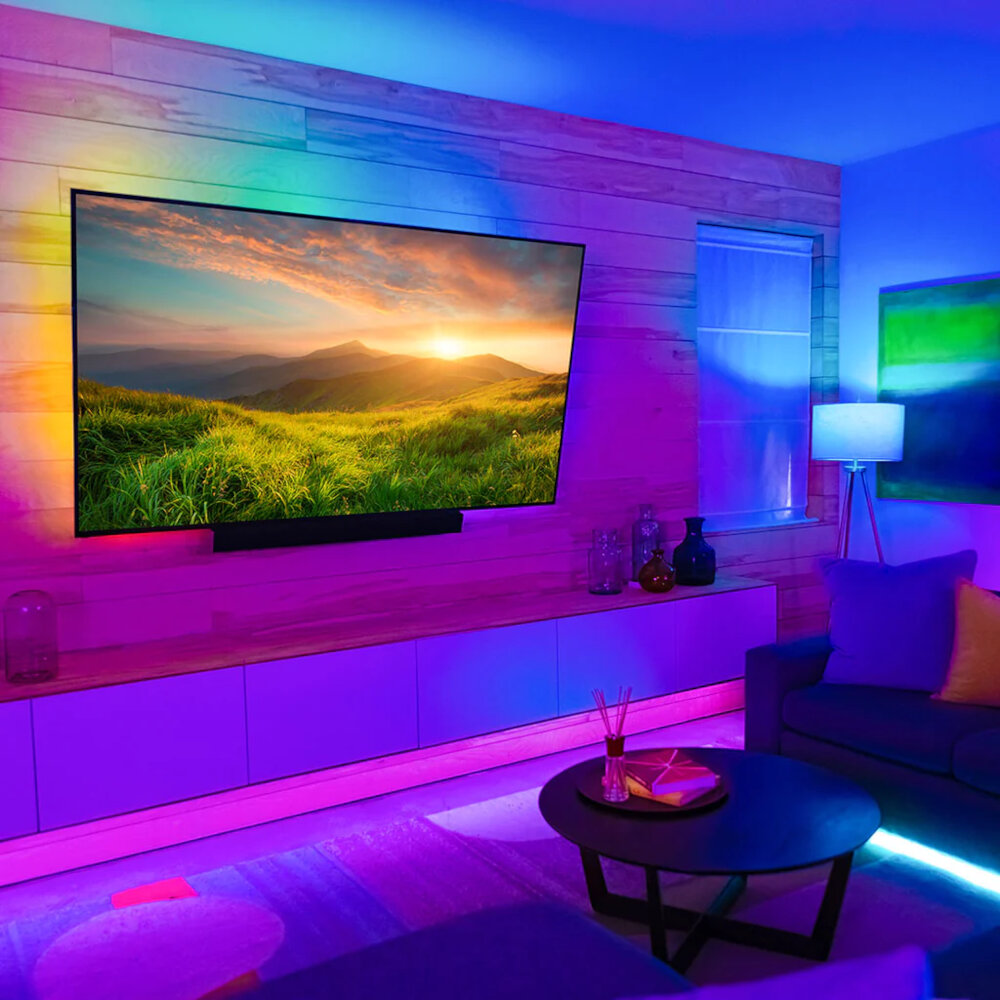
LED lighting technology has revolutionized lighting in the last few years. The advantages of using LED lights over traditional lighting options such as incandescent and fluorescent lights are numerous. LED lights offer a significant reduction in energy consumption, which translates to lower electricity bills. They are energy-efficient as they convert almost all the electricity they consume into light, unlike traditional lights that emit a lot of heat. This not only saves money but is also environmentally friendly as it reduces carbon emissions. LED lights also last longer than traditional lights, with a lifespan of up to 50,000 hours. This means that they require less maintenance, reducing the cost of replacing bulbs frequently. Additionally, LED lights are durable and can withstand harsh weather conditions as they are not made of glass and are resistant to vibrations and shocks. Another advantage of LED lighting is their versatility. LED lights come in a variety of colors and can be customized to suit any lighting needs. They can be dimmed, and the color temperature can be adjusted to create different moods and ambiance. This versatility makes LED lights ideal for use in various settings, including homes, offices, and outdoor lighting. LED lights are also safer to use than traditional lights as they emit less heat, reducing the risk of fires. They are also free of toxic chemicals such as mercury, making them a safer option for the environment. With all these advantages, it’s no wonder that LED lighting is becoming the future of lighting technology.
Energy efficiency is rapidly becoming a top priority for many individuals and businesses. LED lighting is one of the most viable solutions available today for reducing energy costs while simultaneously increasing the lifespan of lighting fixtures. Unlike traditional incandescent bulbs, LED lights use far less energy to produce the same amount of light, making them an excellent choice for those looking to reduce their carbon footprint and save on energy bills. In addition, LED lights last significantly longer than traditional bulbs, reducing the need for frequent replacements and ultimately saving money in the long run. With an ever-increasing demand for energy-efficient solutions, LED lighting is quickly becoming the future of lighting technology.
LED lighting technology offers a longer lifespan compared to traditional lighting. LEDs can last up to 25,000-50,000 hours or more, which is significantly longer than incandescent bulbs that only last around 1,000 hours. This longevity is due to the fact that LEDs do not rely on a filament that can burn out like incandescent bulbs do. Instead, they generate light through a process called electroluminescence, which means they emit light when an electric current is passed through a semiconductor material. This results in a more durable and reliable lighting solution that can save you money in the long run. Plus, the longer lifespan means less frequent replacements, which is better for the environment. All of these factors make LED lighting the future of lighting technology.
LED lighting technology has revolutionized the way we light our homes and workplaces. Not only does it offer significant energy savings and cost reductions, but it also has a range of environmental benefits. LEDs are incredibly energy-efficient, using up to 75% less energy than traditional incandescent bulbs. This means that less energy is required to power these lights, which in turn reduces greenhouse gas emissions and other pollutants associated with electricity generation. Additionally, LEDs contain no harmful chemicals such as mercury, which is commonly found in other types of lighting. This makes them much safer for the environment and easier to dispose of at the end of their lifespan. Overall, LED lighting is an excellent choice for those looking to reduce their carbon footprint and make a positive impact on the planet.
Applications of LED Lighting
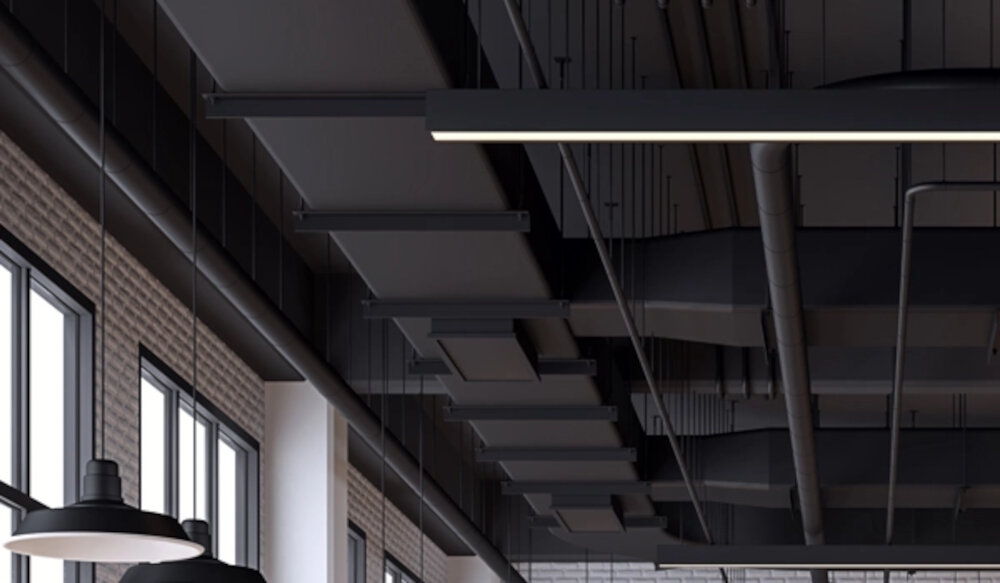
LED lighting has revolutionized the lighting industry in recent years, and the applications of this technology are vast and varied. One of the most significant advantages of LED lighting is its energy efficiency. LEDs consume up to 80% less energy than traditional incandescent bulbs, making them an ideal choice for a wide range of applications, from residential to commercial and industrial lighting. LED lighting is also extremely durable and long-lasting, with a lifespan of up to 50,000 hours, which translates to several years of use. This makes LED lighting an excellent choice for outdoor lighting, where it can withstand exposure to the elements and provide reliable illumination for extended periods. Another significant application of LED lighting is in the realm of interior design. LEDs offer a range of color options and can be used to create stunning lighting effects that can transform any space. LED strip lights, for example, are a popular choice for creating eye-catching accent lighting in homes, retail spaces, and other commercial environments. Additionally, the low heat output of LED lighting makes it a safe choice for use in areas where heat buildup could be a concern, such as museums, galleries, and other spaces where delicate artifacts are displayed. Overall, the versatility and efficiency of LED lighting make it an ideal choice for a wide range of applications, from commercial and industrial to residential and decorative.
Residential and commercial lighting have come a long way in recent years, with LED lighting technology leading the way. LEDs, or light-emitting diodes, are more energy-efficient and have a longer lifespan than traditional incandescent bulbs. In residential settings, LED lighting can be used for everything from task lighting to decorative lighting, while in commercial settings, it can be used for large-scale lighting projects like parking lots and street lights. The versatility and cost-effectiveness of LED lighting make it a popular choice for both residential and commercial applications, and as the technology continues to evolve, we can expect to see even more innovative uses for LED lighting in the future.
Automotive lighting is a crucial aspect of vehicle safety and performance. In the past, traditional incandescent bulbs were the norm for headlights, but with the advent of LED lighting technology, the game has changed. LED lights are far more efficient, durable, and long-lasting than their incandescent counterparts. This technology works by using a semiconductor to convert electrical energy into light, resulting in a brighter and more focused beam. Moreover, LED lights offer a wider range of color options, allowing for more customization and personalization. Overall, the use of LED lighting in the automotive industry is poised to revolutionize the way we think about vehicle lighting, providing a safer and more efficient driving experience for all.
Street lighting and outdoor applications have undergone a significant transformation with the emergence of LED lighting technology. LEDs have become increasingly popular due to their energy efficiency, long lifespan, and low maintenance costs. They produce a bright, white light that enhances visibility and safety in outdoor spaces. LED streetlights can be programmed to adjust their brightness levels based on the time of day or traffic flow, further contributing to energy savings. Additionally, LEDs are more environmentally friendly than traditional lighting options, as they contain no harmful chemicals like mercury and emit less carbon dioxide. The versatility of LED lighting has also made it a popular choice for outdoor decorative lighting, as it can be customized to create a variety of colors and effects. Overall, the future of street lighting and outdoor applications looks bright with the continued advancement of LED technology.
Industrial and agricultural lighting have always been a challenge for traditional lighting technologies. Industrial lighting needs to be robust, high-performance, and energy-efficient, while agricultural lighting must provide the right spectrum of light to promote plant growth and reproduction. LED technology has revolutionized both sectors, offering long-lasting, low-maintenance, and energy-efficient lighting solutions. LED lights can withstand harsh environments and provide high-quality illumination that is essential for industrial and agricultural operations. Furthermore, LED lights can be tuned to specific spectral ranges, allowing farmers to optimize plant growth, flowering, and fruiting. With their longevity, efficiency, and versatility, LED lights are rapidly becoming the future of industrial and agricultural lighting.
The Future of LED Lighting Technology
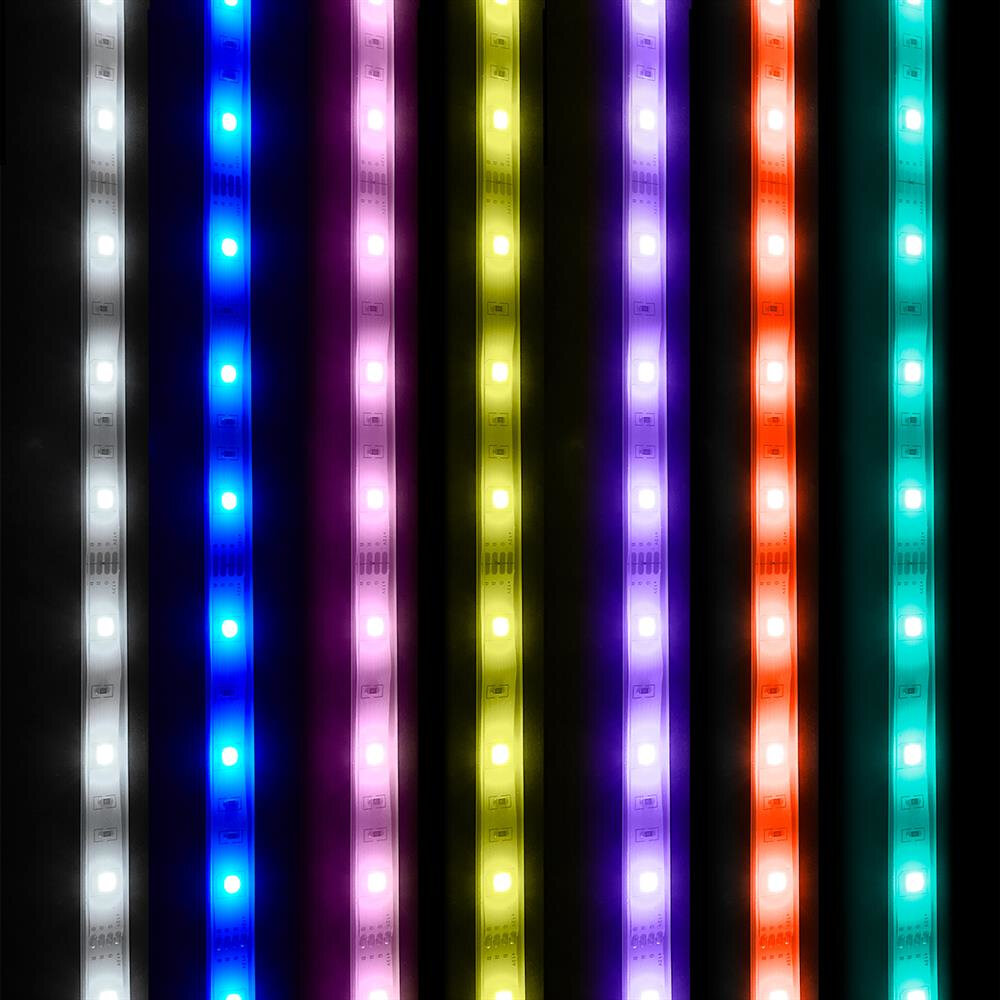
The future of LED lighting technology is incredibly bright. LED lights have already revolutionized the lighting industry by providing a more energy-efficient and cost-effective lighting solution. As technology continues to advance, LED lighting will become even more efficient and provide even greater benefits. For example, advancements in nanotechnology will allow for the creation of even smaller LEDs, which will allow for even greater flexibility in lighting design. Additionally, advancements in color technology will allow LED lighting to provide a broader range of colors, making it ideal for a variety of settings, from homes to commercial spaces. One of the most exciting aspects of LED lighting technology is its potential for integration with other technologies. For example, smart lighting systems can use LEDs to provide a variety of lighting options, all controlled by a single device. This type of integration can save energy, reduce costs, and provide a more convenient and customizable lighting experience. As the Internet of Things (IoT) continues to grow, the integration of LED lighting with other technologies will only become more prevalent, further solidifying its place as the future of lighting technology.
One of the most impressive advancements in lighting technology has been the development of LED lighting. LEDs or Light Emitting Diodes have revolutionized the way we light our homes and offices, offering a more efficient and environmentally friendly alternative to traditional incandescent bulbs. LED lights are capable of producing the same amount of light while using a fraction of the energy, making them much more energy-efficient and cost-effective. Additionally, LED lights have a much longer lifespan, reducing the need for frequent replacements and minimizing waste. With the continued advancements in efficiency and performance, it’s clear that LED lighting is the future of lighting technology.
Integration with smart technology is one of the most significant advancements in LED lighting technology. With the use of smart technology, LED lights can be controlled remotely, and various functions can be automated. This technology allows for seamless integration with other smart devices in the home or office. It is possible to set schedules for lighting, adjust the color temperature, and even dim the lights without ever having to leave your seat. What’s more, LED lights can be connected to voice-activated assistants like Amazon’s Alexa or Google Assistant, making controlling your lighting as easy as speaking a command. As we continue to integrate LED lighting with smart technology, we can expect to see even more innovative features that will revolutionize the way we use lighting in our daily lives.
LED lighting technology has revolutionized the lighting industry with its energy efficiency, long lifespan, and eco-friendliness. However, the potential of LED lighting extends beyond just these benefits. The versatility and flexibility of LED lighting have opened up avenues for new applications in various industries. From ultraviolet LED lights in the medical field to LED grow lights for indoor gardening, LED lighting has found its way into diverse fields. LED lights can also be used in horticulture to optimize plant growth and increase yields. With continuous research and development, the potential of LED lighting is limitless, and it will undoubtedly continue to be at the forefront of lighting technology.
In summary, LED lighting technology has revolutionized the lighting industry with its numerous benefits and potential. LED lights are highly energy-efficient, consuming up to 90% less energy than traditional incandescent bulbs, and have a longer lifespan, reducing maintenance costs. They emit less heat, making them safer to use and reducing the need for cooling systems. LED lights also provide better quality and color rendering of light, making them suitable for a wide range of applications, from outdoor lighting to museum displays. Furthermore, LED lighting technology is constantly evolving, with new advancements in efficiency, color options, and smart lighting capabilities, making it the future of lighting technology.
Switching to LED lighting is a highly encouraged and sustainable solution for the future of lighting technology. LED lights are highly energy-efficient, last longer than traditional bulbs, and contain no hazardous chemicals. Not only does this mean lower electricity bills, but it also has a positive impact on the environment. LED lights emit less carbon dioxide and other harmful emissions, making them an eco-friendly choice. With the advancements in LED technology, they are now available in a range of colors, sizes, and styles, making them an aesthetic choice too. Making the switch to LED lighting is a small yet impactful step towards a more sustainable future.
Conclusion
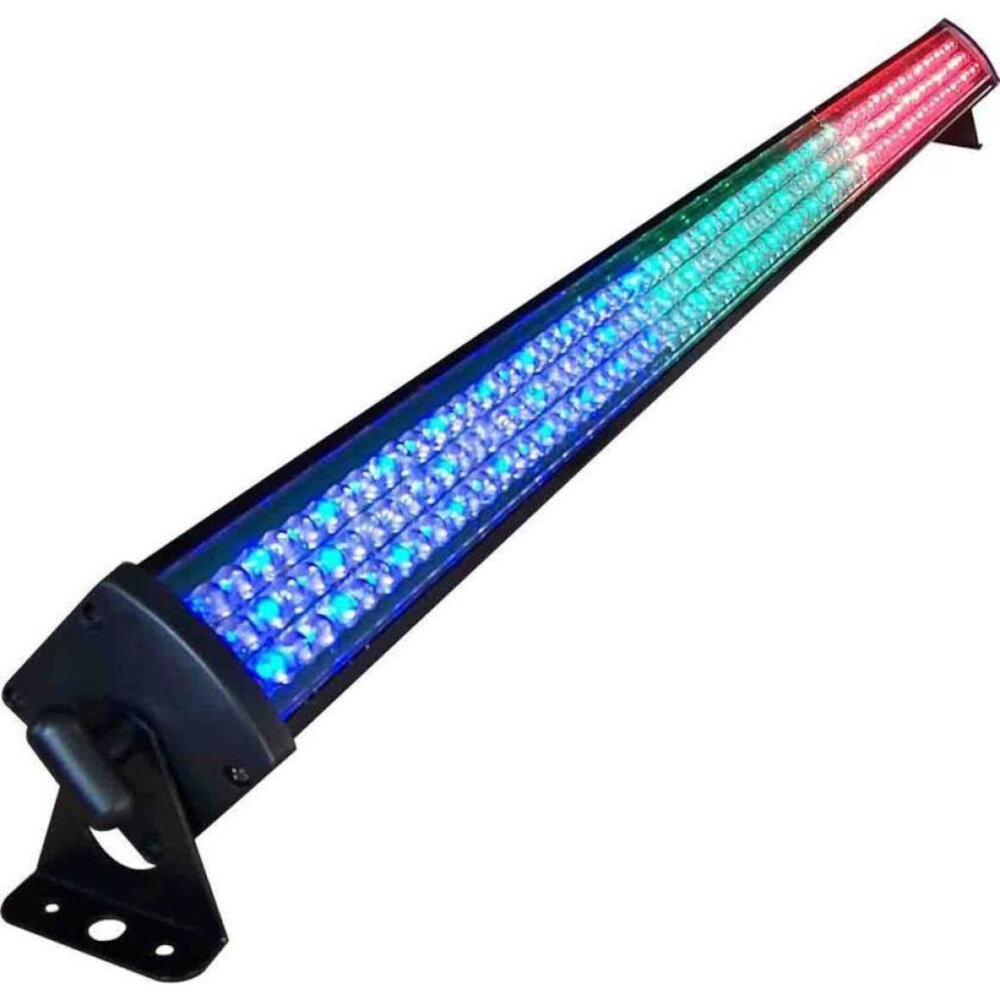
In conclusion, LED lighting technology is no longer a mystery. We now understand how an LED light works and why it’s the future of lighting technology. LED lights are highly efficient, long-lasting, and environmentally friendly. They have revolutionized the lighting industry and are quickly becoming the go-to choice for consumers and businesses alike. As we continue to move towards a more sustainable future, LED lighting will undoubtedly play a critical role in reducing energy consumption and minimizing our carbon footprint. With their impressive lifespan and low maintenance requirements, LED lights are a smart investment that will benefit both the environment and our wallets in the long run. It’s time to embrace the power of LED lighting and illuminate a brighter, cleaner future for all.

